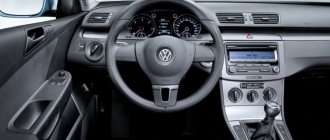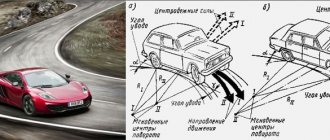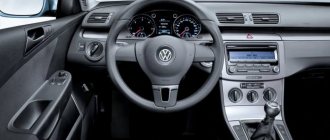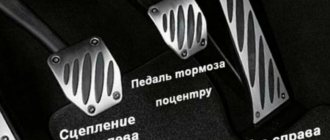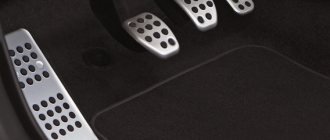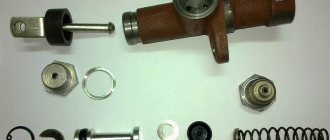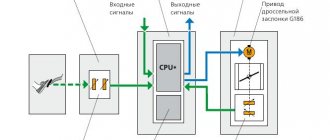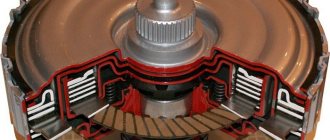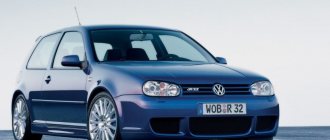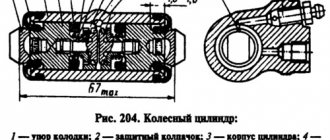How to brake correctly in a car with a manual transmission - with the clutch depressed or with the gear in operation? Even drivers who have many years of experience driving manual cars cannot answer this question unequivocally. Let's consider how the car behaves in both cases, and which method of braking is more effective and safe.
Whether or not to depress the clutch when braking in manual mode
Different driving schools explain it differently: some say that you need to squeeze, others insist that you need to use the clutch pedal only when the car has almost stopped, so as not to stall. We will say this: you need to brake according to the situation, since the way the clutch works depends on weather conditions and the condition of the road surface.
If you need to slow down a little...
In some cases, the driver does not need to stop the car, but just slow down a little. For example, when changing lanes from one lane of traffic to another. The algorithm of actions here is the same as when the car comes to a complete stop on a straight section of the road. The only difference is that when reducing speed, you should not allow the car to come to a complete stop, and most importantly, do not let the engine stall.
To do this, with the speed turned on, we begin to slow down the car with light, smooth movements. We wait until the speed of this working stroke drops to the minimum level. And only after that we depress the clutch pedal and switch to lower gear. If the speed is still too high to perform the maneuver, we repeat the entire braking procedure again, before switching to an even lower gear.
What happens to the car when the clutch is depressed
Clutch is a mechanism involved in transmitting torque from the engine to the gearbox and then to the wheels of the car. It is necessary for smooth gear shifting, to start or stop the car. In other moments of movement, the clutch is not needed.
If such a situation nevertheless occurs, then the torque transmission is broken. This can lead to poor vehicle control or, worse, skidding.
The most dangerous moments for braking with the clutch disengaged:
- descent movement;
- driving on wet or icy road surfaces;
- driving on asphalt covered with debris or sand.
If you decide to brake with the clutch engaged, the torque will be transmitted evenly to all drive wheels. In such cases, the car is more stable, the load on the brakes becomes less, and stopping occurs smoothly.
Torque and safety
Hence the conclusion: when reducing speed, engage lower gears, and then you will increase the safety of your movement. Engage a lower gear every time the tachometer needle drops to 2500 rpm on a naturally aspirated gasoline engine, up to 2000 on a turbocharged gasoline engine, and up to 1500 on a diesel engine. It is possible at higher speeds, this is at your discretion. But definitely not at lower ones; here I give the lower averaged limits. I recommend that you check the maximum torque values for your car and base it on this when changing gears.
It is especially important to engage a lower gear when cornering, since the car on an arc is much less stable than on a straight line. Details and practice in the courses “The Magic of Shifting”, “Driving on a Race Track” and “MBA Driver Course: Mastery of Car Driving”.
By the way, pay attention to the tachometer of your car. It is numbered to approximately 7000 rpm if you have a gasoline engine, and up to 5 thousand if you have a diesel engine. Think about it, why are such high speeds provided in the car? And here’s the question: why, if the average driver keeps the speed in the region of 1500-2000? If you are one of these drivers, this is a good reason to think about the correct driving style...
Main types of braking
Standard braking
This type of braking occurs in the event of a planned stop of the vehicle. This could be stopping at a traffic light in order to park or let a car or pedestrian pass.
This approach allows you to maintain the desired trajectory, and, if necessary, quickly gain speed.
Engine braking
This type of braking is acceptable, most often on long descents. In such a situation, the driver takes his foot off the gas pedal, thereby stopping the flow of fuel and reducing engine thrust. Smooth braking occurs, without stress on the braking system.
Stepped combined braking
The essence of such braking is to periodically press the brake pedal over a short period of time. The force of pressing the pedal depends on the situation:
- on snowy, icy road surfaces or off-road, a stepped braking method is used with increasing force;
- on dry asphalt or concrete, a stepwise method with decreasing force is used.
Emergency braking and steering
It is best to use the pulse (step) method of braking during emergency braking. If necessary and if the situation allows, you can gradually switch to lower gears.
Taxiing is performed during periods when the brake pedal is released. The steering movements are so short, impulsive, without intercepting the hands. With this approach, the trajectory will be more predictable and there will be less risk that the car will go into an uncontrolled skid.
It is PROHIBITED to lean forward and hold tightly to the steering wheel in an emergency situation . It is best to rest your back against the back of the car seat. With this arrangement, you will better feel the behavior of the car and the beginning of a skid.
Error table for exercise
The first column of the table contains descriptions of possible errors, and the second column shows the number of errors that can be made. 0 means that after the first mistake the exam is graded “FAIL”.
| Error | Possible quantity |
| 113.1. Did not start performing the test exercise within 30 seconds after receiving the command (signal) to start performing it. | 0 |
| 113.2. Knocked down marking equipment. | 2 |
| 113.3. According to the projection of the vehicle size, he drove beyond the boundaries of the test exercise areas, marked by road marking lines 1.1 white or 1.4 yellow and marking cones (marking posts), or drove his wheel onto the marking line marking the boundaries of the test exercise areas, depending on the conditions of the test. exercises. | 0 |
| 113.5. Did not cross the control line with the external dimensions of the vehicle in cases where crossing the control line is provided for by the conditions of the test exercise. | 0 |
| 113.6. Deviated from the specified trajectory of movement provided for by the conditions of the test exercise. | 0 |
| 113.7. Allowed the engine to stop. | 2 |
| 113.15. Left the exam (refused to complete the test exercise). | 0 |
Braking on a car with ABS
In a car without ABS, all 4 wheels lock when braking. ABS works in such a way that when braking, the wheels are blocked only for a short time, thanks to a sensor. As soon as he “realizes” that a wheel is blocked, he immediately sends an impulse to the solenoid valve of the hydraulic unit. As a result, the brake fluid pressure decreases or stops and the wheel rotates freely again.
The ABC system allows you to apply impulse braking without driver intervention. Therefore, there will be one simple rule: if the need arises for a quick stop, you just need to press the brake pedal all the way. Smart electronics will do the rest itself.
When off-road, you need to be guided by the situation: sometimes it is better to turn off ABS. For example, on a sandy slope, where it is important that the wheels are constantly blocked. Therefore, the driver needs to constantly assess the situation and not rely blindly on electronics.
Parallel parking procedure
Let's look at what needs to be achieved as a result of the exercise:
- Drive up to the start line of the exercise and stop. Please note that the line for starting the exercise is in the figure above cone number 1.
- Cross the start line of the exercise and stop.
- Reverse between imaginary cars.
- Stay.
- Leave the exercise area.
In addition, the administrative regulations of the Ministry of Internal Affairs regulate the trajectory along which the driver must complete the exercise. Therefore, the only possible way to pass the exam is to parallel park in one go (reverse gear can only be engaged once).
The nuances of braking in a car with a manual transmission for a beginner
| Type of braking | Actions |
| Braking before a traffic light |
PS: If the distance allows, then it is best to brake with the engine. |
| Braking in a corner |
PS: Sharp braking when turning is unacceptable! Be sure to slow down. |
| Downhill braking |
PS: You should always use engine braking when going downhill. |
| Braking on slippery roads |
PS: be careful when driving across bridges: even if everything is dry, there may be ice in such places. |
Purpose of a car oil filter
The purpose of an oil filter is to extend the life of a car engine. During engine operation, various contaminants enter the lubricant, for example, soot, rust, and metal shavings, which are a product of engine wear.
The ingress of these substances into motor oil leads to its thickening and loss of its normal physical and chemical characteristics, increasing the rate of engine wear.
Based on the above, the function of a car oil filter is to remove contaminants from the lubricant circulating in the engine.
Braking in various situations
Braking behavior depends on many factors. All possible nuances are outlined below.
| Situation | Braking method | Unacceptable actions |
| Direct road or area, service stop or parking lot | With the clutch engaged, if necessary - using engine braking | Drive in neutral or with the clutch disengaged |
| Emergency on a dry road | Pulse braking with force reduction | Press the brake pedal to the floor and hold it there |
| Emergency situation on a wet or slippery road | Impulse braking with increasing force | Hit the brake pedal hard and steer while braking. |
| Driving on a steep slope | Engine braking in a low gear, helping the car with short presses on the brake pedal (if necessary) | Use only the brake pedal, brake for a long time |
| Cornering | Reduce speed in advance, do not disengage the clutch when turning | Brake sharply, especially by holding the brake pedal for a long time |
We tried to analyze all braking options. But, if you are a beginner and want to drive your car safely, then it is best to contact an experienced instructor and practice all the above options for braking on a manual transmission.
Repair
It is not possible to repair window regulators in all cases. Mostly, these glass lifting devices can be repaired in case of obvious mechanical fractures of the elements.
But we can still give some useful tips regarding restoring the functionality of the window regulator without replacing it.
- If the electric window motor fails to work, then the brushes or winding are most likely to blame. To verify this and fix the damage, you need to remove the motor, disassemble it and clean the outer and inner surfaces.
- For cleaning, it is recommended to use a lint-free cloth. The cloth is soaked in gasoline, alcohol or a special cleaning agent. When you buy the latter, you can use it for a long time, the efficiency is higher compared to gasoline.
- After cleaning and drying the parts, it is recommended to treat the moving elements with lubricant so that the mechanisms function longer.
- If the cable comes off the lifting mechanism, you will have to dismantle it, remove the electric motor, or unwind the cable if it is mechanical. Then the cable is pulled back onto the grooves and the assembly is reassembled.
- If a malfunction occurs in the mechanism or the electrical circuit of the device, it is necessary to study this circuit, determine the direction of the wires, and then ring them. This is the most effective way to check for electrical failure.
Lifting device diagram
Repairs in most cases only give temporary results, so soon you will still have to make a full replacement. This is due to the fact that each part has its own service life and degree of wear. When they are reached, the window regulator stops working.
Replacing or repairing mechanical or electrical window regulators cannot be called complex undertakings. It is quite possible to cope with such tasks with your own hands.
Installing a new oil filter
Compliance with the technology for installing a new oil filter will avoid problems with dismantling in the future.
During installation you should:
- Remove old grease and other contaminants from the oil filter fitting on the engine block.
- Lubricate the oil filter sealing rubber with the oil that will be poured into the engine. This will ensure proper tightness of the connection and maintain the elasticity of the seal.
- The filter should be tightened by hand as much as possible.
- The final tightening should be done using a torque wrench with a torque set at 17 N*m. If there is no such tool, then you should turn the filter with another available tool along the axis to the right by ¾ of a turn.
Causes of oil filter sticking
The main reasons for filter sticking:
- Prolonged heating of the filter and melting of the rubber gasket;
- Changes in the physicochemical properties of oil trapped in the thread under the influence of high temperatures;
- Excessive force applied to tighten the thread when installing the filter;
- Thread mismatch during installation.


